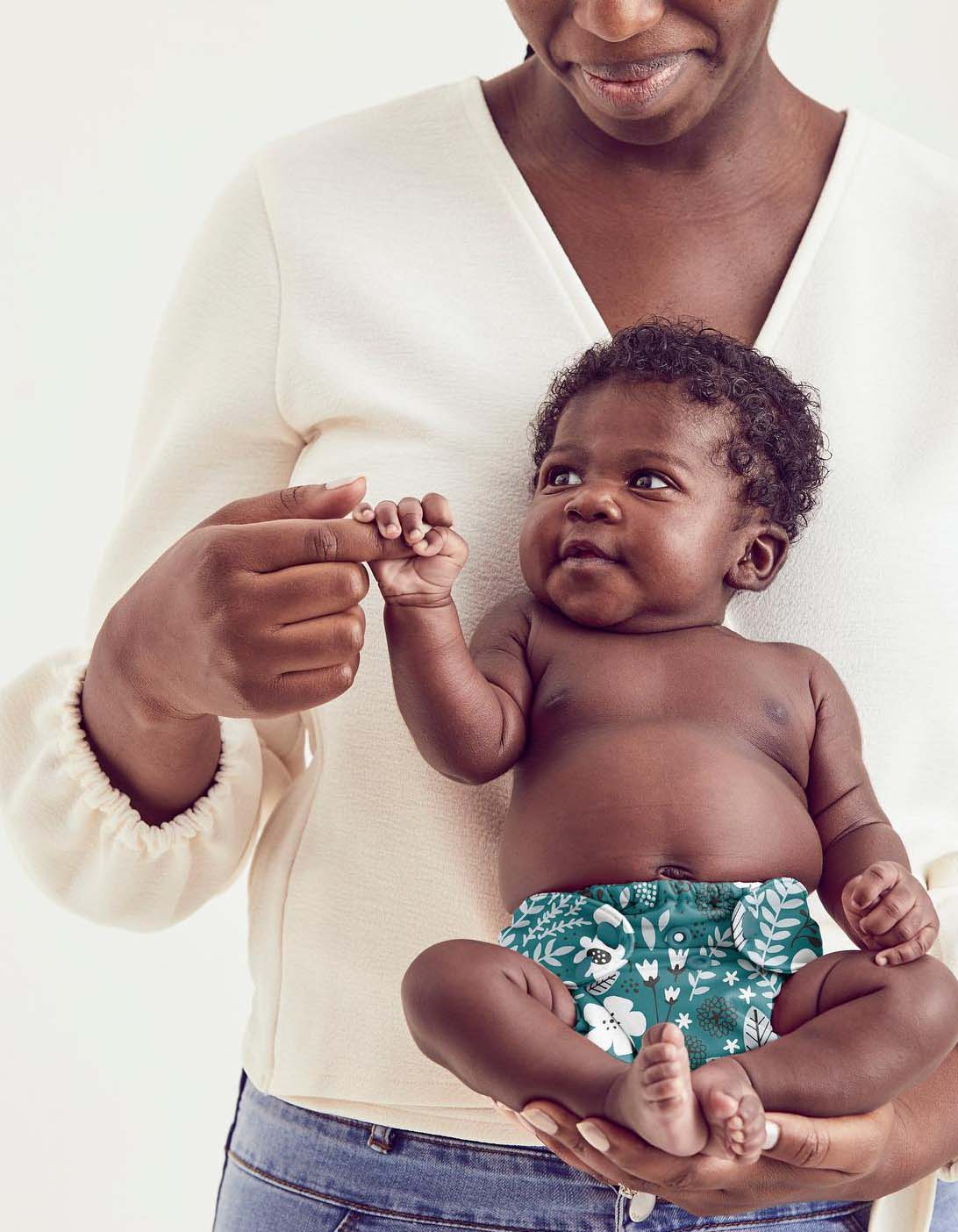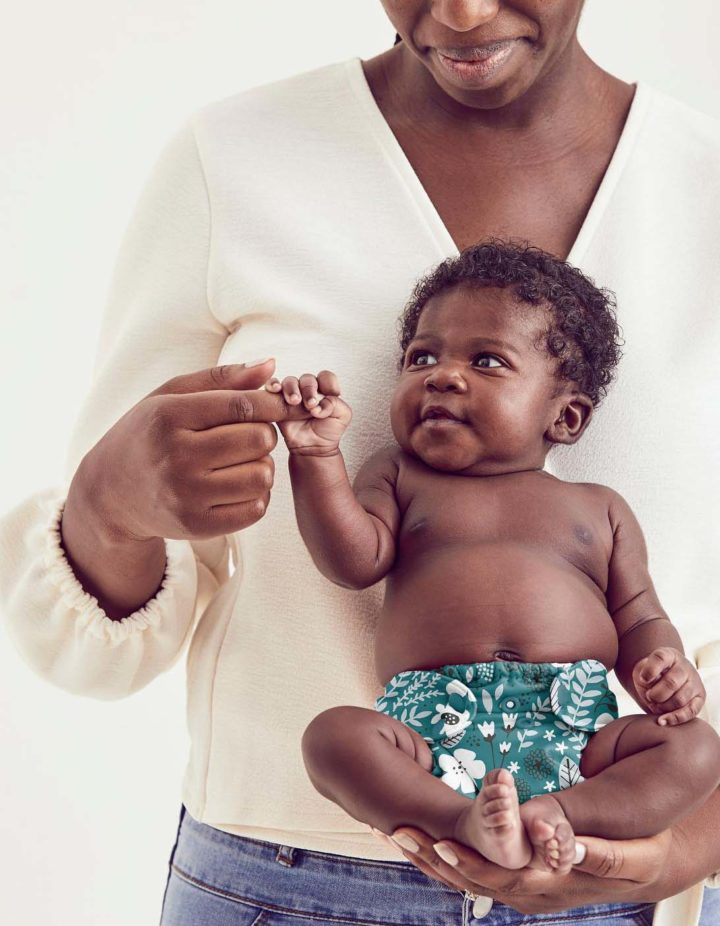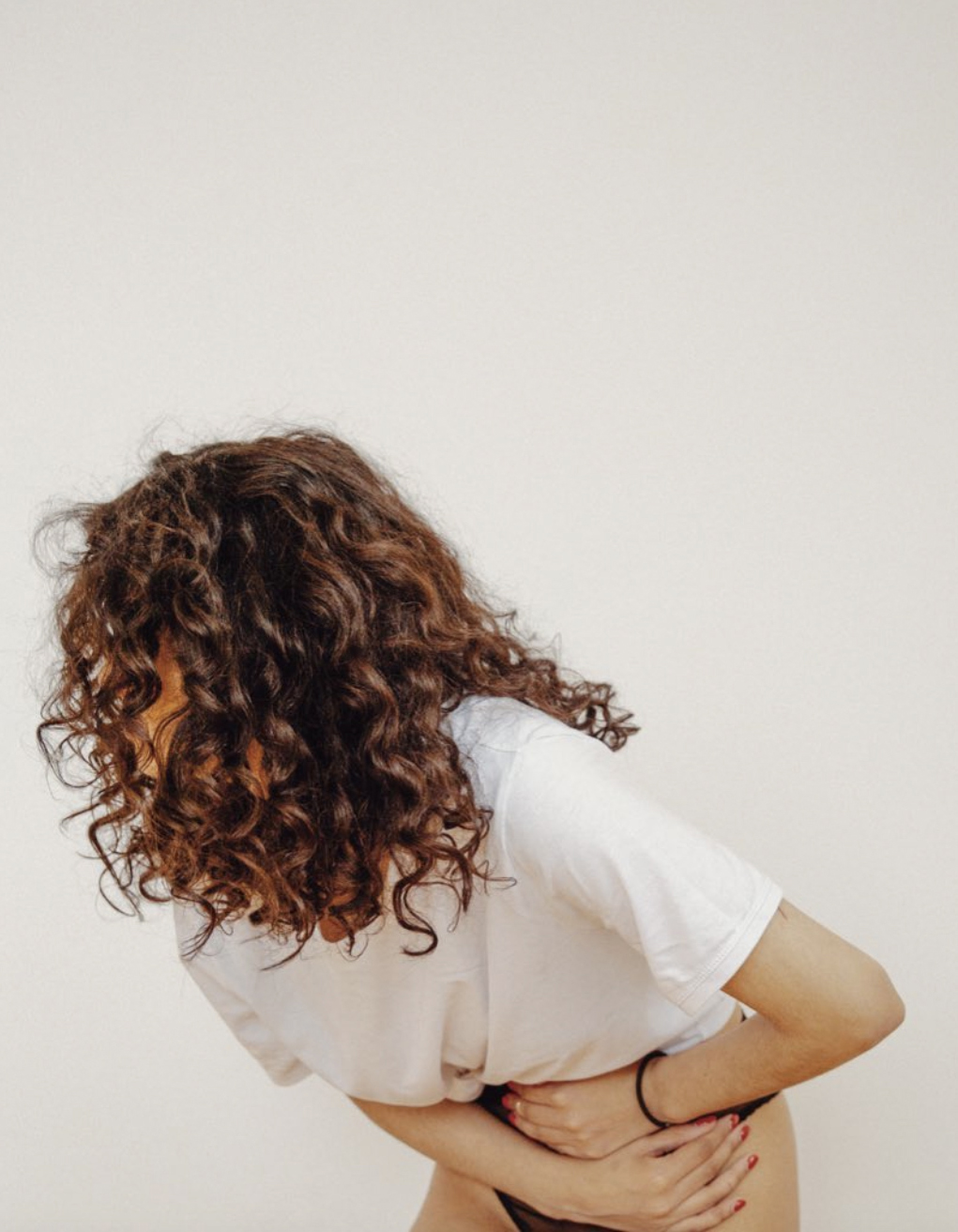Everything about having a baby is overwhelming, reducing waste and saving the planet doesn’t have to be! With these tips you’ll feel empowered (and excited) to raise your babe in an eco-conscious home.
Now, I admit. It’s a bit ironic to compile a list of “must-haves” for low-waste parenting as the ultimate goal of low waste living is to live with less. That said, there are some items that truly are must-haves. These items are functional, easy to get your hands on, and drastically reduce the amount of waste you and your baby produce. Just remember, you don’t have to do it all! Find a balance that works for you and build upon it when you’re ready.
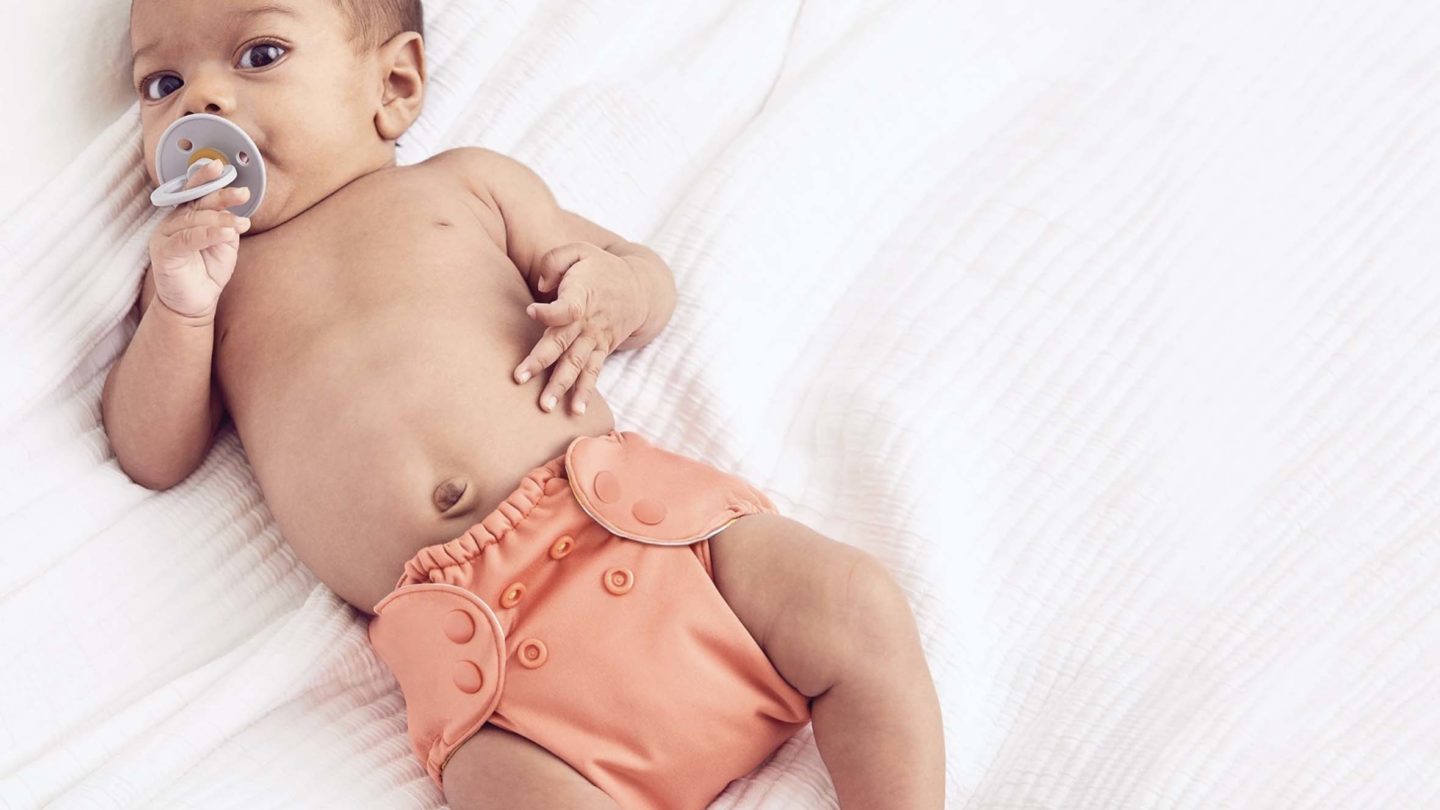
1. Cloth Diapers
I know I know, starting off with cloth diapers is aggressive. But, a list of the must-haves for low-waste parenting isn’t complete without them! I promise, they’re much less overwhelming than they seem, especially when you know the staggering stats about disposable diapers.
In the U.S. alone, we throw away 37 BILLION disposable diapers each year. Those diapers make up 30% (yes, 30%!) of non-biodegradable waste in landfills. You’ll be relieved to hear that cloth diapers are more doable than I expected. They prevent waste from entering landfills and help you save money. The initial investment is more than disposables, but you can use them for all your babies and even sell them after use. (There’s a thriving used cloth diaper market).
My favorite brand of cloth diapers is Esembly. The website explains exactly what you need from diapering to laundering to caring for baby’s delicate skin. Additionally, the inner liners (the part that touches baby) are made of organic cotton. We only experienced a real blow out (aka when poo finds its way out of the diaper and onto everything around it) once. And that was when we weren’t using Esembly diapers! The two-part diapering system (inner liner + cute outer cover) really protects against nasty poo-splosions.
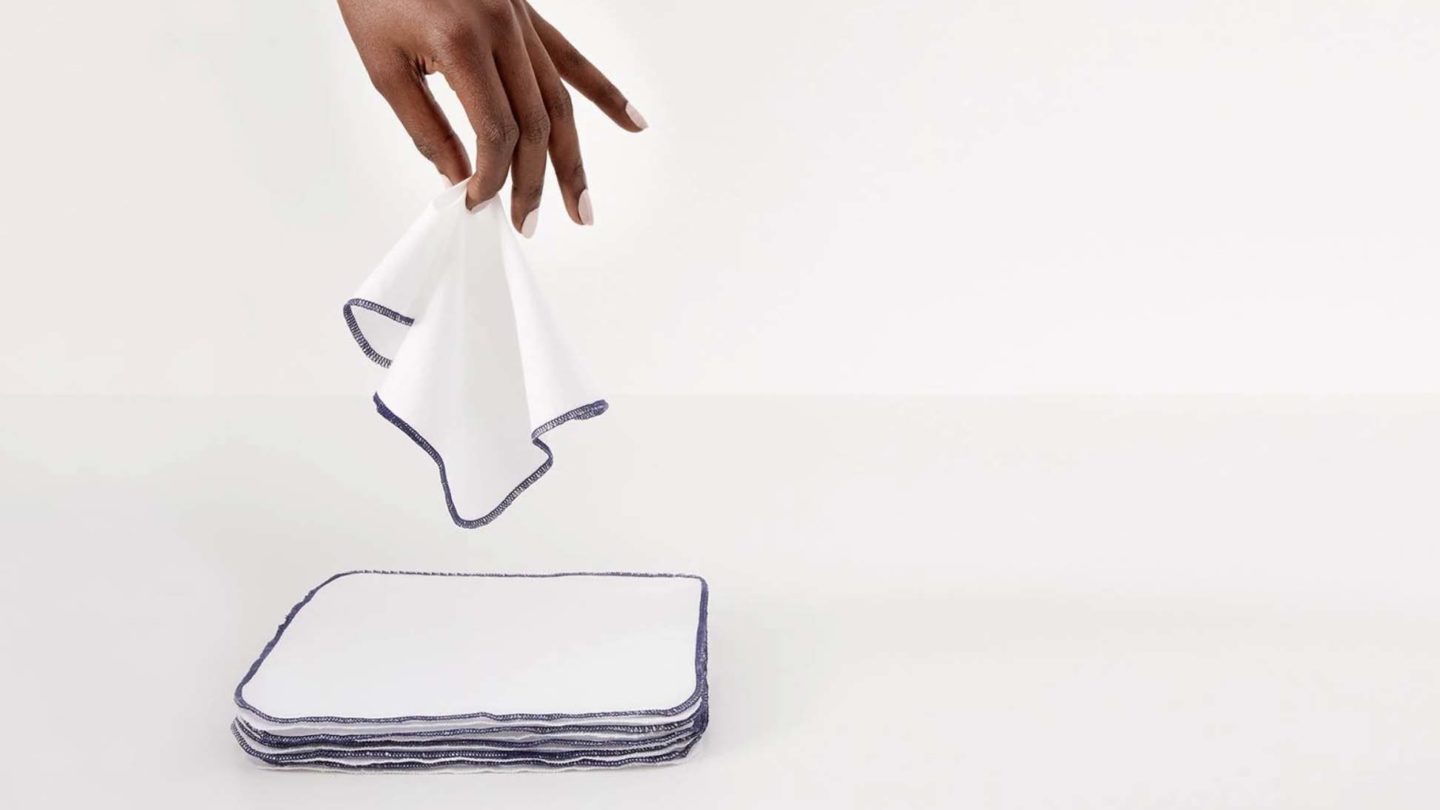
2. Cloth Wipes
Now that you have cloth diapers on your mind, let’s talk wipes. A guiding principle of low-waste living involves avoiding single-use items as often as possible. Baby wipes are used for only a few seconds before they go straight into the garbage. (BTW- never flush wipes down the toilet or you’ll have many other poo-problems).
Not only do wipes contribute to landfill waste, but also many of them are made of questionable ingredients. The cloths themselves are likely made out of plastic or other materials that are treated with harsh chemicals. (Companies legally don’t have to disclose what the wipe itself is made of). And, there are likely other harmful chemicals, like phthalates, lurking in the cleaning solutions.
The best way to avoid waste and to protect your baby from harmful chemicals is to use cloth wipes. All you really need to clean your baby is a cloth wipe sprayed with water (see below!). If you want a non-toxic soap, Esembly has a great option. I use organic cotton cloth wipes for diaper changes and cleaning my baby (all. day. long.). I find that organic cotton wears the best. Bamboo tends to get stiffer over time with washing.
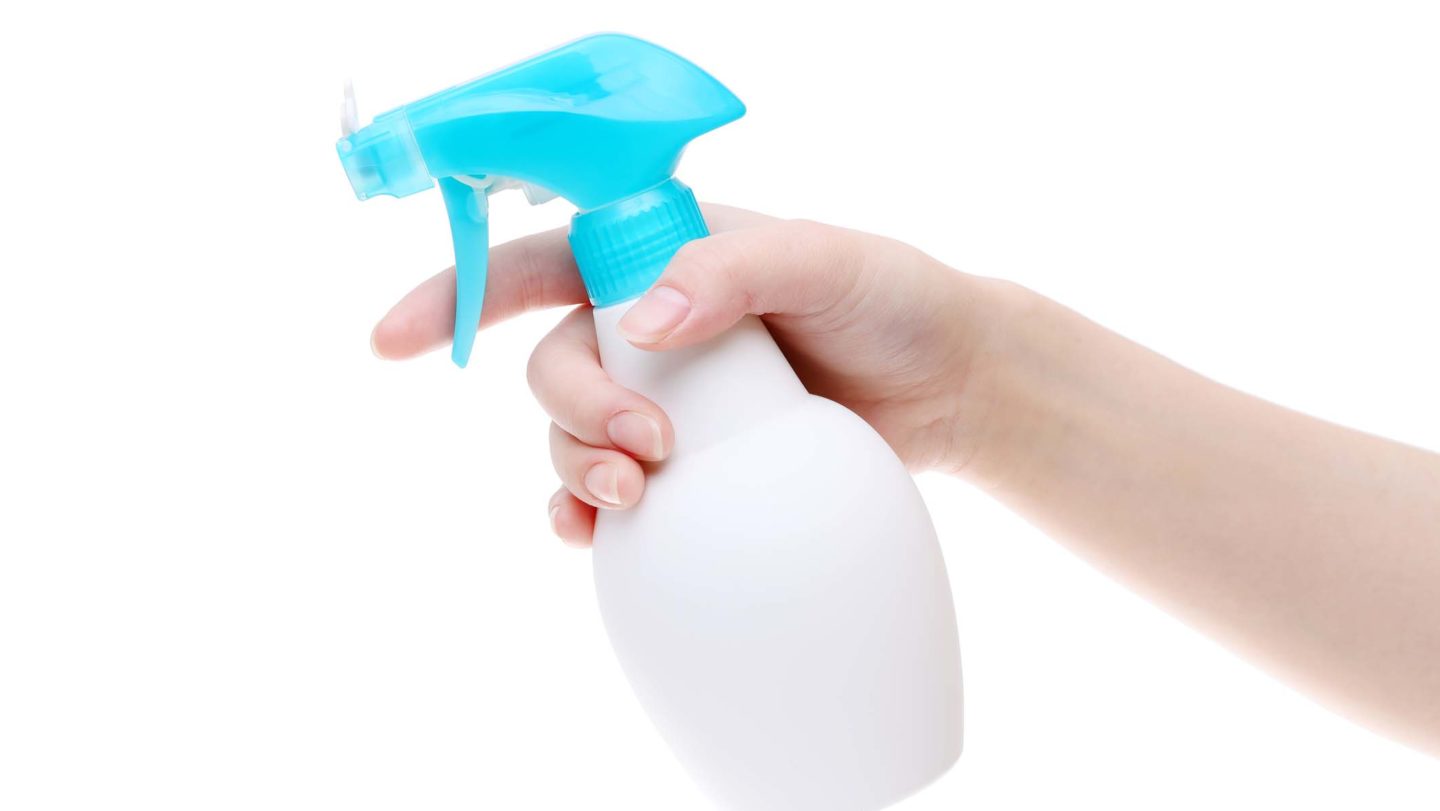
3. Stainless Steel Spray Bottle
Stainless steel spray bottles filled with water are the best for cleaning baby! When you have to change baby or clean up after a messy meal, simply spray your cloth wipes with water and wipe away.
I prefer stainless steel over glass because if your baby is anything like mine, he/she will get hold of the spray bottle and throw it. Some don’t feel comfortable with stainless steel bottles for that reason. So, I also recommend a plastic spray bottle. (I rarely recommend using plastic, but this is one instance where it makes sense).
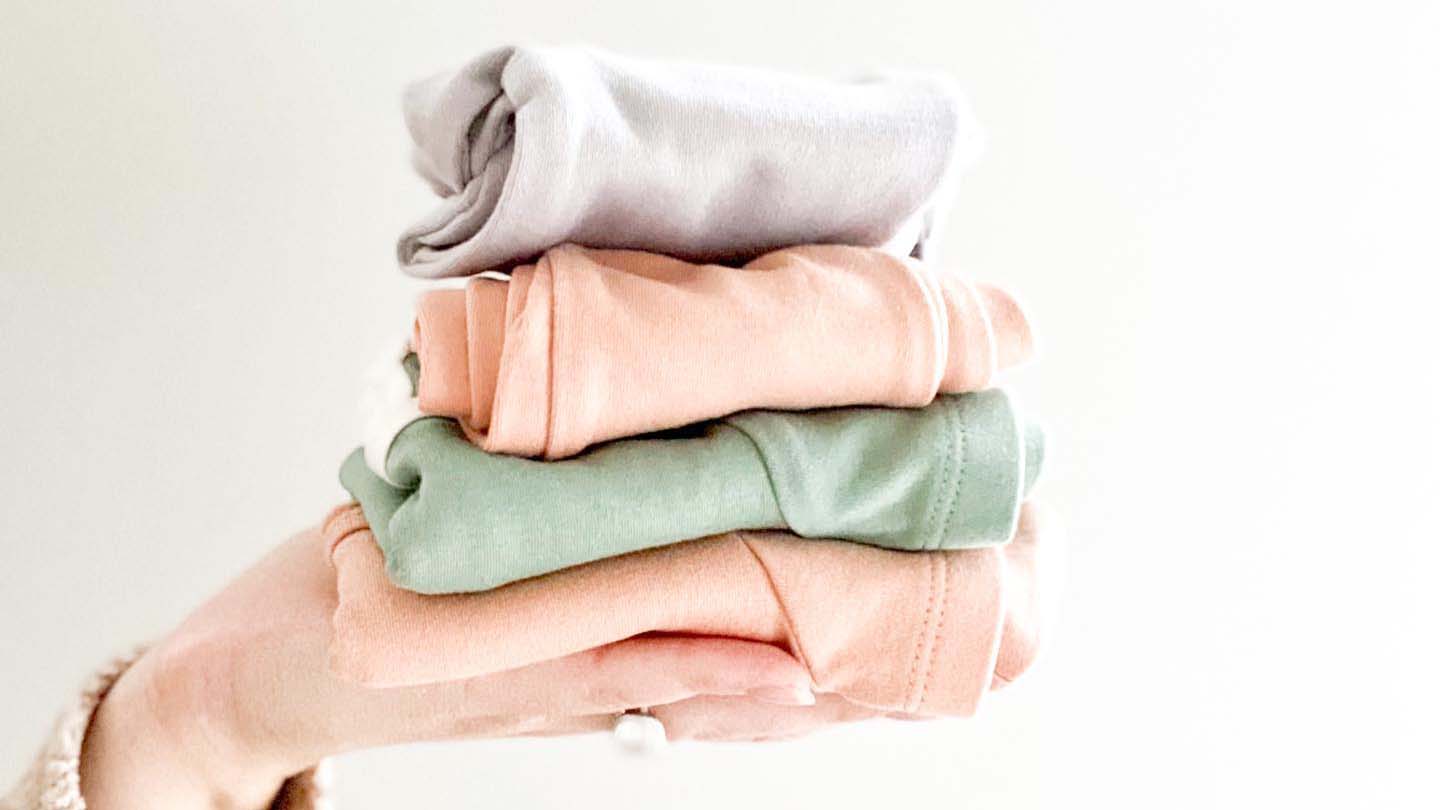
4. Second-Hand Clothes
I know you want to dress your cute baby in the chicest outfits that are healthy for baby (no toxic chemicals!) and healthy for the planet. But, organic baby clothing is pricy AND babies grow out of clothes SO FAST. It seems like one second your carefully folding gorgeous newborn clothes and the next second you’re rummaging through your messy drawers searching for something, anything, that fits your growing babe. Because babies grow quickly, it’s great to rely on second-hand clothes from friends and family. Many of the outfits are barely worn!
If you’re the first of your friends and family to have a baby (congratulations!), check out companies like UpChoose that rents baby clothes and Little Lentil that takes back and sells used clothes. By using second-hand clothes or renting clothes, you avoid sending perfectly good clothing to landfill!
It’s also a good idea to line up where the clothes are going to go once your babe grows out of them. I use canvas storage trunks from The Laundress to store clothes for baby number two. If you think you’re on your last baby, choose a lucky friend or charity to receive the clothes. Please don’t throw them away! FYI- Thred Up accepts baby clothes that are in great shape.
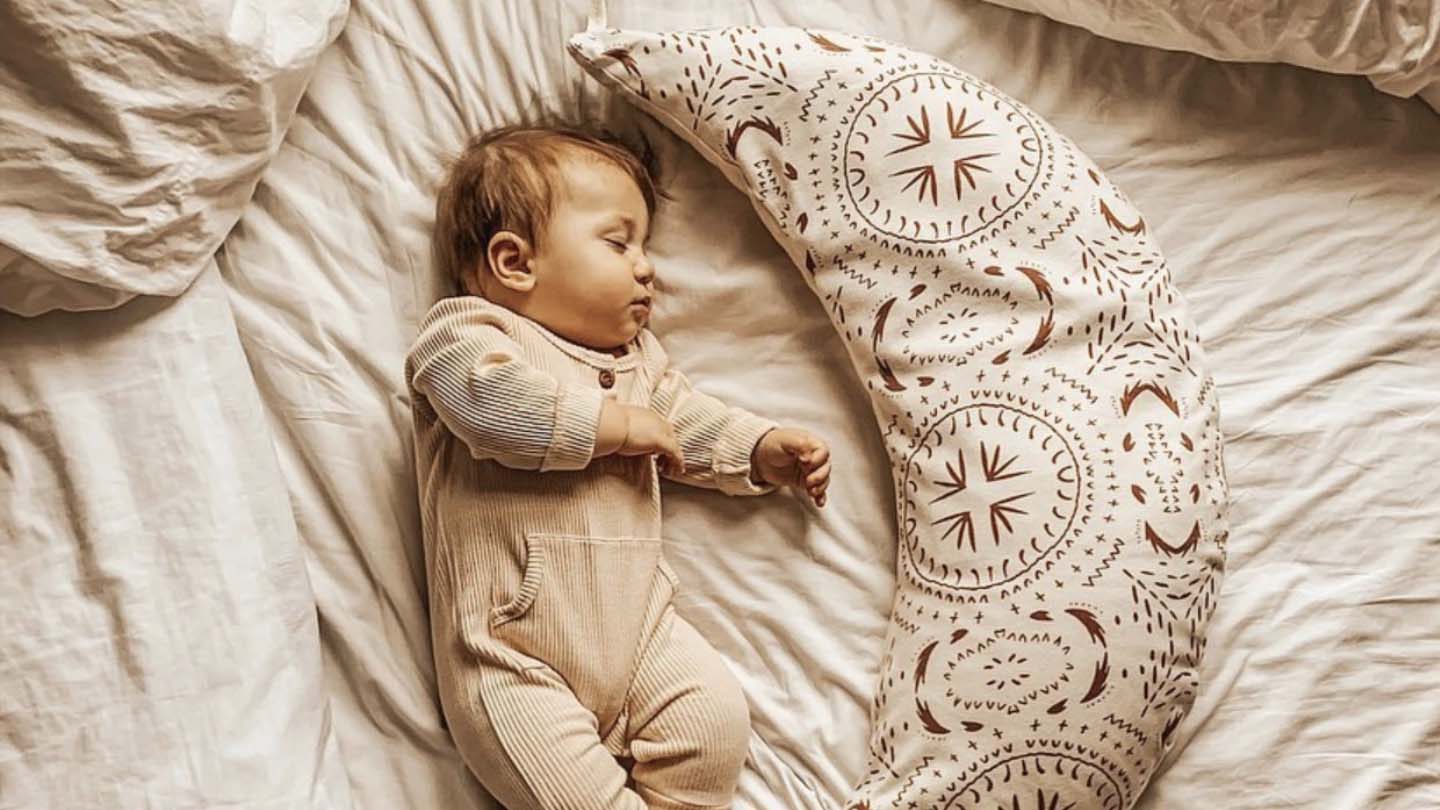
5. Sustainable Pillow for Pregnancy, Breastfeeding, Naps and Beyond
Purchasing items that serve multiple purposes is essential for low waste living. Yet so many items marketed for pregnancy and parenting have very short lifespans.
The “Boppy” is on most must-have-for-baby lists and for good reason. Having ANYTHING that makes breastfeeding and bottle feeding easier is more than welcome! However, because of its shape, it’s not really useful for anything other than feeding. (Plus, it’s not made with sustainable materials).
I love The Sustainable Baby Co.’s MoonWomb™ pillow as it serves multiple functions and it’s made from the highest quality materials (think organic cotton and organic buckwheat shells). You can use it during pregnancy to support your growing bump (especially important when trying to get comfortable in those last few weeks), for feeding baby in any position for optimal support for baby and comfort for you, and for tummy time and supervised naps. And, because it’s so comfortable and beautiful, you can use it long after you finish breast or bottle feeding! You can even use it as a bolster — place it under your knees and lie back. (All mamas need and deserve this deeply restorative yoga pose).
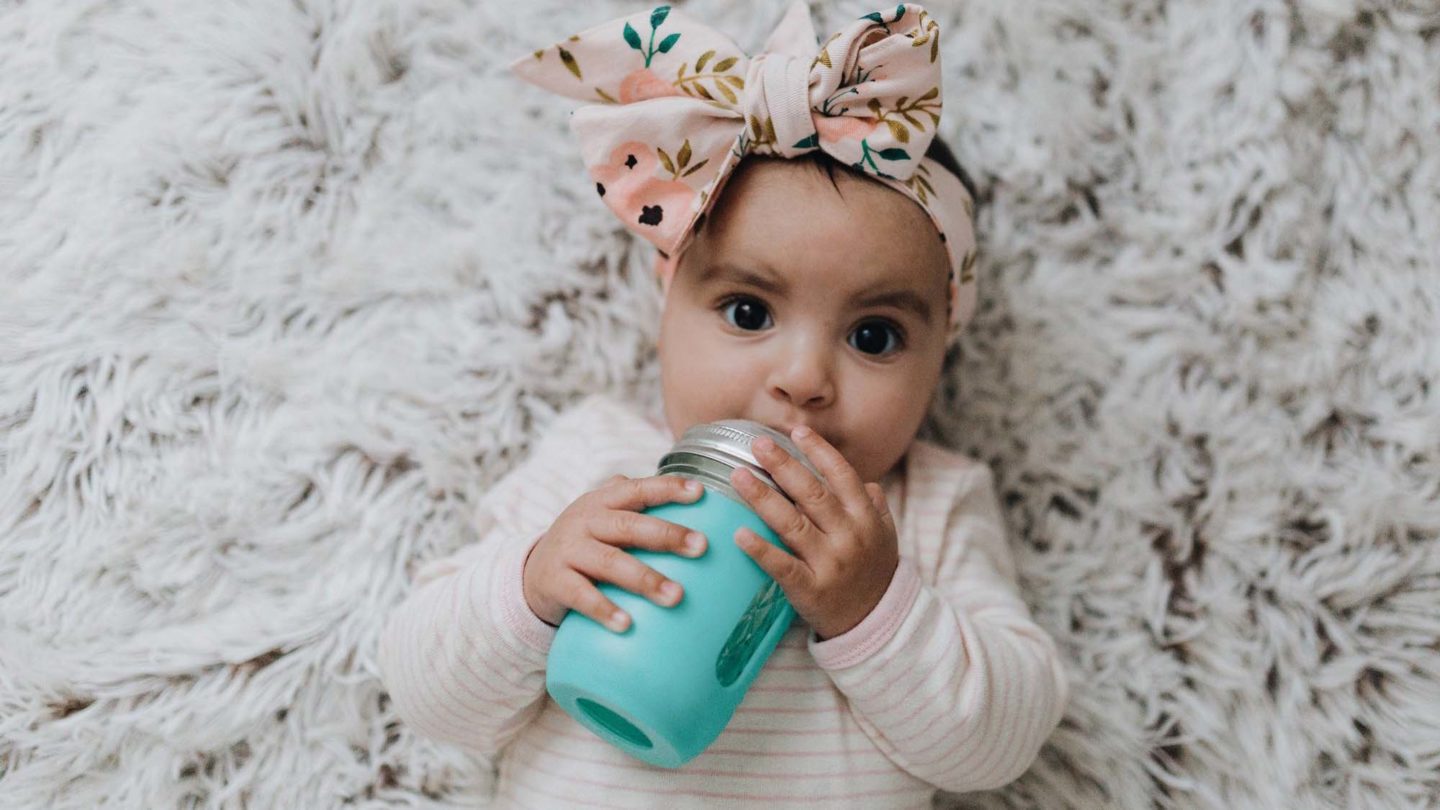
6. Glass Baby Bottles
Plastic contains many chemicals, including known endocrine disruptors, and isn’t infinitely recyclable, meaning it eventually ends up in landfill or our oceans. The chemicals in plastic can leach into the food/beverages that we then eat or drink— the warmer the food/beverage, the more likely leaching will occur. FYI: Breastmilk and formula are served warm!
Glass baby bottles are a great alternative to plastic. Mason Bottle makes ones that can turn 4-ounce and 8-ounce mason jars into baby bottles. The silicone sleeves protect the bottles from breaking! And you’ll be able to use the mason jars long after baby stops drinking milk.

7. Subscriptions for Deodorant, Soap, Shampoo, Conditioner and Toothpaste
When caring for a baby, it’s all too easy to forget to care for yourself. That’s why subscribing to your favorite zero-waste, non-toxic products is a real lifesaver. Many high-quality brands offer subscriptions (with the added bonus of a discount when you subscribe!). I love Meow Meow Tweet’s deodorant and hair care products and Bite toothpaste bits. Package Free Shop also offers subscriptions on a great selection of products.
It’s amazing not to have to remember to order your own products! (Now all you have to do is remember to shower).
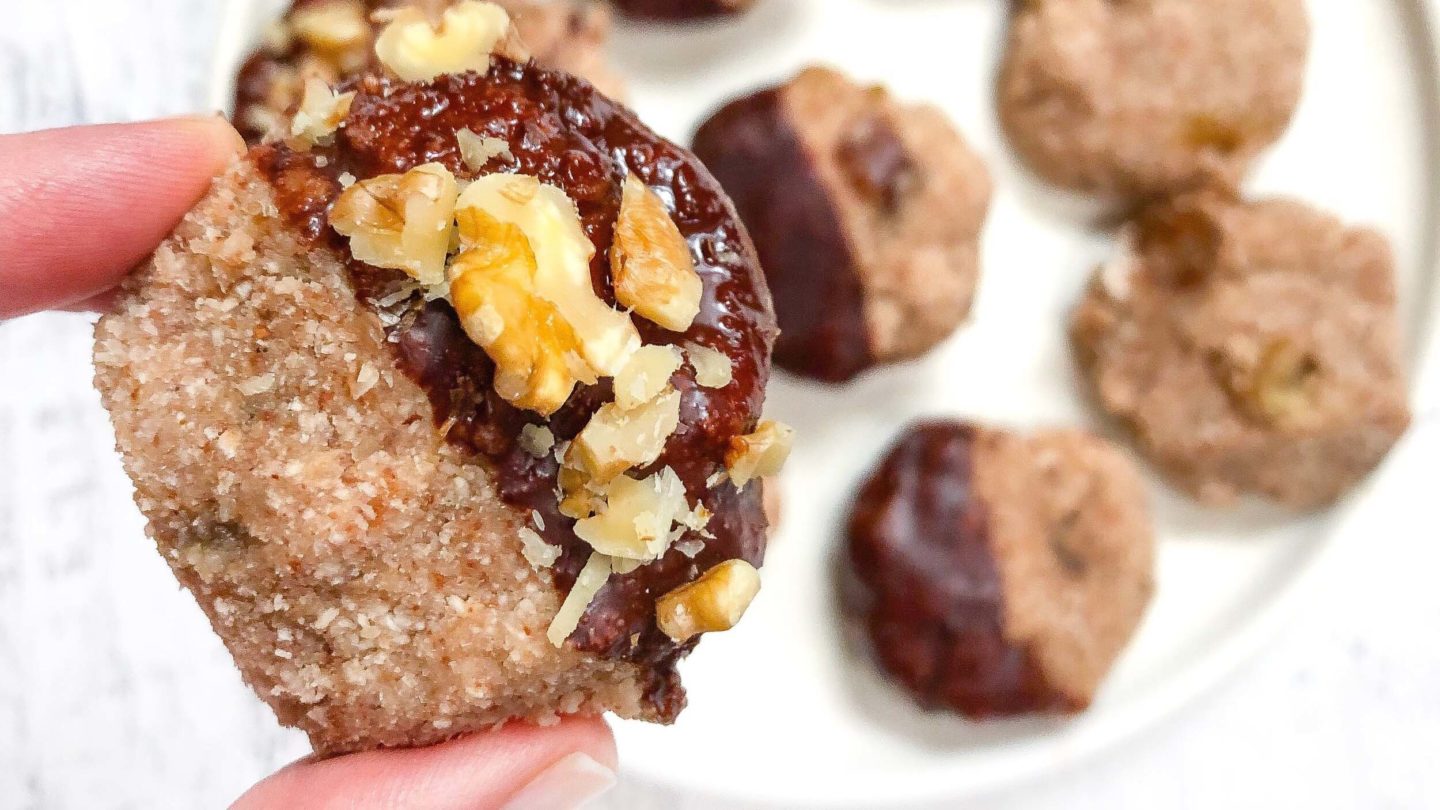
8. “Naked” Snacks
As a dietitian, a list of must-haves is never complete without mentioning food. Like self-care products, it’s also easy to forget to adequately nourish ourselves. And because the most convenient snacks are wrapped in single-use plastic packaging, having a plan to “snack naked,” as I call it, is a game changer.
Snacking naked involves having package free snacks on hand. As luck would have it, package free foods just so happen to be the healthiest for you, your baby, and the planet! Think fruits and veggies bought without plastic, and nuts, seeds, and dried fruit from the bulk section of supermarkets. During the first few weeks after my baby was born, every night I put a 16-ounce glass jar filled with nuts and dates on my nightstand. I ate the whole jar to keep myself nourished (and awake). Check out my blog for more ideas for snacking naked.
Also, I highly suggest incorporating prunes into your daily routine. There’s no more important time to support being regular than after having a baby. Trust me!

9. A Very Large Diaper Bag
When you live less disposably, there’s no doubt more stuff to carry around. Having a REALLY LARGE diaper bag saves you from having many smaller bags to remember to pack and bring back home. I put my baby’s diapers in the Esembly diaper bag (which has a designated compartment for dirty diapers) and then I put everything else in my large Mina Baie backpack.
Two of my friends gifted me very large personalized tote bags and they are lifesavers. I never thought that I’d need bags so large, but we use them all the time. They’re particularly great for transporting our stash of cloth diapers when we go on road trips.
I hope this list helps you on your quest to reduce waste as a parent! It takes all of our small commitments to really make a difference. No step is too small!
